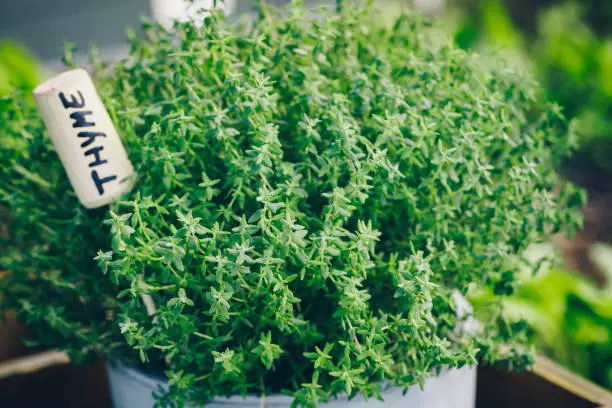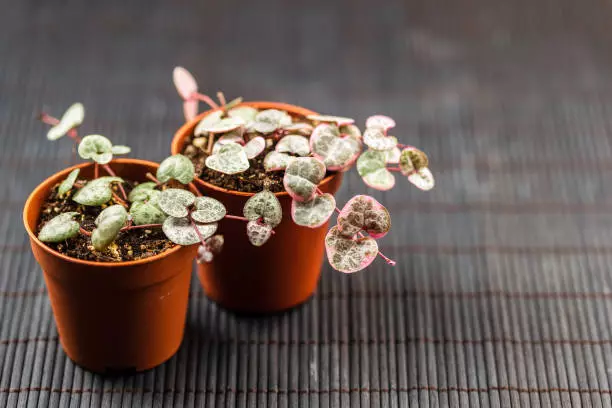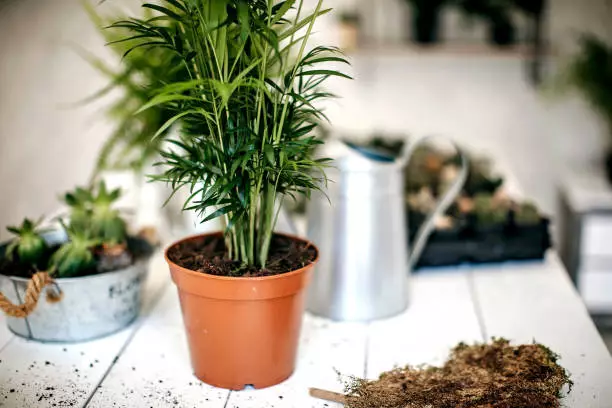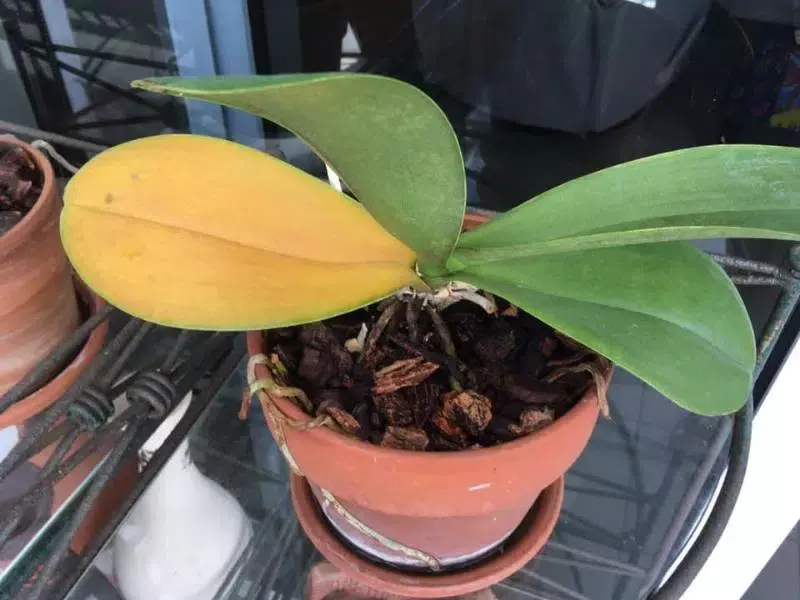Green tomatoes are a common sight in gardens during the early stages of the growing season. While some gardeners may choose to pick these tomatoes early and allow them to ripen indoors, others prefer to leave them on the vine to ripen naturally. However, it is sometimes sad to watch unripe tomatoes remain green on the vine, especially when the growing season is coming to an end.
Fortunately, there are a few techniques that can be used to help turn green tomatoes red on the vine. One of the most important factors in ripening tomatoes is temperature. Tomatoes require warm temperatures to ripen, so if the weather has been particularly cool or if the growing season is coming to a close, it may be necessary to take some additional steps to encourage ripening. Additionally, proper watering and fertilization can also play a role in helping tomatoes ripen on the vine. By following a few simple techniques, gardeners can enjoy a bountiful harvest of ripe, juicy tomatoes straight from the vine.
Understanding the Ripening Process
Tomatoes are one of the most popular fruits in the world, and they come in a variety of colors, shapes, and sizes. Ripe tomatoes are red and juicy, while unripe tomatoes are green and hard. The ripening process is a complex biochemical process that involves the production of ethylene, a gas that triggers the ripening process.
Tomatoes can ripen on the vine or after they are picked. When tomatoes ripen on the vine, they produce more sugars, which makes them taste sweeter. Additionally, tomatoes that ripen on the vine tend to have a better texture and aroma than those that are picked early.
The ripening process of tomatoes involves a series of biochemical changes that occur over time. During the ripening process, the tomato fruit softens, changes color, and becomes sweeter. This process is controlled by a hormone called ethylene, which is produced by the tomato fruit itself.
Green tomatoes can be turned red on the vine by allowing them to ripen naturally. However, this process requires patience and careful attention to the ripening process. It is important to note that not all green tomatoes will ripen on the vine, and some may need to be picked and ripened off the vine.
In order to turn green tomatoes red on the vine, it is important to understand the ripening process. Ripening can be accelerated by exposing the tomatoes to ethylene gas, which can be produced naturally by other ripening fruits, such as bananas and apples. However, this process should be done carefully to avoid over-ripening the tomatoes.
Overall, understanding the ripening process is essential for turning green tomatoes red on the vine. By carefully monitoring the ripening process and providing the right conditions for the tomatoes to ripen, it is possible to produce delicious, ripe tomatoes that are perfect for eating or cooking.
Factors Affecting Tomato Ripening
Temperature Influence
Temperature plays a crucial role in the ripening process of tomatoes. Optimal temperatures for ripening range between 68-77°F (20-25°C). Temperatures below 55°F (13°C) can cause chilling injury, leading to uneven ripening and reduced quality. Cold temperatures, especially those approaching freezing, can cause damage to the fruit, leading to poor quality, and even rotting. On the other hand, hot temperatures above 86°F (30°C) can cause sunscald, leading to reduced quality and yield.
Role of Nitrogen and Potassium
Nitrogen and potassium are essential nutrients required for the growth and development of tomato plants. Nitrogen is necessary for the production of chlorophyll, which gives tomatoes their green color. However, excessive nitrogen can delay ripening and reduce fruit quality. Potassium, on the other hand, plays a crucial role in the ripening process and is responsible for the development of color, flavor, and aroma in tomatoes. Adequate potassium levels can improve fruit quality and enhance the ripening process.
Impact of Diseases
Diseases can significantly impact the ripening process of tomatoes. Cold temperatures can increase the incidence of diseases such as gray mold and bacterial soft rot, leading to reduced quality and yield. Frost can damage the fruit, leading to reduced quality and yield. Proper disease management practices such as sanitation, crop rotation, and the use of disease-resistant varieties can help minimize disease incidence and improve the quality and yield of tomatoes.
In summary, the ripening process of tomatoes is influenced by several factors, including temperature, nitrogen, potassium, and diseases. Proper management of these factors can help improve the quality and yield of tomatoes and ensure successful ripening on the vine.
Practical Ways to Turn Green Tomatoes Red
Indoor Ripening Methods
If you want to turn green tomatoes red indoors, there are a few methods you can try. First, you can place the tomatoes in a cardboard box with a ripe banana. The banana will release ethylene gas, which can help ripen the tomatoes. Be sure to check the tomatoes daily and remove any that are starting to rot.
Another method is to place the tomatoes in a paper bag or a container with a lid. Again, you can add a ripe banana to help speed up the process. Keep the container at room temperature and check the tomatoes daily. Once they start to turn red, you can remove them from the container and store them in the refrigerator.
Outdoor Ripening Techniques
If you want to turn green tomatoes red on the vine, there are a few techniques you can try. First, you can cover the tomato plants with a row cover. This will help trap heat and speed up the ripening process. Be sure to remove the cover once the tomatoes start to turn red.
Another technique is to prune the tomato plants. By removing some of the leaves and branches, you can help the sun reach the tomatoes more easily. This can help speed up the ripening process. Be sure to water the plants regularly and fertilize as needed.
Overall, turning green tomatoes red can take some time and patience. But with the right techniques and a little bit of luck, you can enjoy delicious, ripe tomatoes straight from your garden.
Tomato Varieties and Their Ripening Characteristics
Tomatoes come in a variety of shapes, sizes, and colors. Each variety has its own unique ripening characteristics that determine the time it takes for the fruit to turn red on the vine. Some of the most common tomato varieties include:
- Beefsteak tomatoes: These are large, meaty tomatoes that can take up to 85 days to ripen on the vine.
- Cherry tomatoes: These small, bite-sized tomatoes are known for their sweet flavor and can take anywhere from 60 to 70 days to ripen on the vine.
- Roma tomatoes: These oblong-shaped tomatoes are often used for sauces and can take up to 75 days to ripen on the vine.
Green tomatoes are unripe tomatoes that have not yet turned red. The red color of tomatoes comes from a pigment called lycopene, which develops as the fruit ripens. Another pigment, carotene, is also present in tomatoes and contributes to their orange color.
The ripening process of tomatoes is influenced by several factors, including temperature, light, and humidity. In general, tomatoes ripen faster in warmer temperatures and with exposure to direct sunlight. However, excessive heat and light can cause the fruit to become overripe and lose its flavor.
Cherry tomatoes are known for their ability to ripen quickly on the vine, making them a popular choice for gardeners. Green fruits on cherry tomato plants will turn red in approximately 60 to 70 days, depending on the variety and growing conditions.
While some tomato varieties may take longer to ripen on the vine, it’s important to allow the fruit to ripen naturally for the best flavor. Harvesting tomatoes too early can result in a lack of sweetness and a mealy texture. By understanding the ripening characteristics of different tomato varieties, gardeners can ensure a bountiful harvest of ripe, flavorful tomatoes.
Maintaining Healthy Tomato Vines
Growing healthy tomato vines is essential for producing ripe and juicy tomatoes. Proper maintenance of tomato vines includes pruning and caring for the stems. Here are some tips to help you maintain healthy tomato vines.
Pruning and Stems Care
Pruning is the process of removing unwanted leaves, stems, and suckers from the tomato plant. This process helps to improve the overall health of the plant and increase fruit production. Pruning also helps to control the size and shape of the plant.
When pruning tomato vines, it is important to remove the suckers that grow in the crotch between the stem and the branch. Suckers are small shoots that grow from the main stem and can take away nutrients from the plant. Removing them will help the plant focus its energy on producing fruit.
Caring for the stems is also important. Make sure to remove any damaged or diseased stems to prevent the spread of disease. It is also important to provide support for the stems to prevent them from breaking under the weight of the fruit.
Addressing Common Problems
Tomato vines can be susceptible to various problems, including pests, diseases, and nutrient deficiencies. Here are some common problems and how to address them:
- Blossom-end rot: This is a common problem caused by a calcium deficiency. To prevent this, make sure to provide enough calcium to the plant through fertilizers or soil amendments.
- Pests: Tomato plants can be attacked by various pests, including aphids, whiteflies, and tomato hornworms. To prevent pests, use insecticidal soap or neem oil.
- Diseases: Tomato plants can be affected by various diseases, including blight and powdery mildew. To prevent diseases, make sure to provide good air circulation and avoid watering the leaves.
- Nutrient deficiencies: Tomato plants can suffer from nutrient deficiencies, including nitrogen, phosphorus, and potassium. To prevent this, make sure to provide enough fertilizers to the plant.
By following these tips, you can maintain healthy tomato vines and produce ripe and juicy tomatoes.
Harvesting and Storing Tomatoes
Harvesting tomatoes at the right stage of maturity is crucial for getting the best flavor and quality. Tomatoes that are picked too early will not fully ripen and may have a bland taste, while those that are overripe may be too soft and have a shorter shelf life.
When harvesting tomatoes, it is best to pick them when they are fully mature but still firm. The color of the tomato can also be a good indication of its maturity. For example, green tomatoes are unripe, while red, yellow, or orange tomatoes are ripe.
To avoid damaging the tomatoes, it is recommended to use a pair of pruning shears or scissors to cut the stem, leaving a small piece of the stem attached to the fruit. This method helps to prevent the stem from breaking off and damaging the tomato.
After harvesting, it is important to store the tomatoes properly to extend their shelf life. Tomatoes should be stored at room temperature, away from direct sunlight, in a single layer. Avoid stacking or squeezing the tomatoes together, as this can cause them to bruise and spoil more quickly.
If you have harvested green tomatoes, you can ripen them by storing them at room temperature in a paper bag or cardboard box. Adding a ripe banana or apple to the bag can also help to speed up the ripening process, as these fruits release ethylene gas, which promotes ripening.
In conclusion, harvesting and storing tomatoes properly can help to ensure the best flavor and quality. By picking tomatoes at the right stage of maturity and storing them in a cool, dry place, you can extend their shelf life and enjoy fresh, delicious tomatoes for longer.
Using Green Tomatoes in Recipes
Green tomatoes are not just for frying. While fried green tomatoes are a classic dish, there are many other ways to use green tomatoes in recipes. Here are a few ideas to get you started:
- Salsas: Green tomatoes add a tangy flavor to salsas. Try mixing diced green tomatoes with onions, jalapenos, cilantro, and lime juice for a refreshing salsa.
- Chutneys: Green tomatoes can also be used to make chutneys. Cook diced green tomatoes with sugar, vinegar, and spices like ginger and cinnamon for a sweet and tangy condiment.
- Relishes: Green tomato relish is a great accompaniment to grilled meats. Mix diced green tomatoes with onions, bell peppers, vinegar, and sugar for a zesty relish.
- Pickles: Green tomatoes can be pickled just like cucumbers. Try pickling green tomatoes with garlic, dill, and vinegar for a crunchy snack.
When using green tomatoes in recipes, keep in mind that they have a tangy and slightly bitter flavor. This can be balanced out by adding sugar or other sweeteners. Green tomatoes are also firmer than ripe tomatoes, so they hold up well in cooked dishes.
Overall, green tomatoes are a versatile ingredient that can add a unique flavor to many dishes. Don’t be afraid to experiment and try new recipes with green tomatoes.
Growing Tomatoes Successfully
Tomatoes are one of the most popular vegetables grown in home gardens. They are easy to grow and provide a bountiful harvest. Growing tomatoes successfully requires some planning and attention to detail. Here are some tips to help you grow healthy and productive tomato plants.
Choosing the Right Growing Season
Tomatoes require warm weather to grow, so it is important to choose the right growing season. The best time to plant tomatoes is in the spring when the soil has warmed up and there is no longer a risk of frost. In some areas, you can also plant tomatoes in the fall for a second harvest.
Starting with Homegrown Tomatoes
One of the best ways to ensure a successful tomato harvest is to start with homegrown tomatoes. You can save seeds from your favorite tomato varieties and grow them the following year. This ensures that you are growing tomatoes that are well-suited to your growing conditions.
Starting from Seedlings
If you are new to gardening or don’t have the time to start your own seeds, you can also purchase seedlings from a local nursery. When selecting seedlings, look for healthy plants with strong stems and green leaves. Avoid plants that are spindly or have yellow leaves.
Planting and Growing Tomatoes
When planting tomatoes, choose a location that receives at least six hours of sunlight per day. Tomatoes also require well-draining soil that is rich in organic matter. To promote healthy growth, fertilize your tomato plants with a balanced fertilizer every two weeks.
Supporting Tomato Vines
As tomato plants grow, they will need support to keep their vines off the ground. You can use stakes, cages, or trellises to support your tomato plants. Staking is a popular method that involves tying the tomato plant to a stake as it grows. Caging involves placing a wire cage around the plant to support its vines. Trellising involves training the tomato vines to grow up a trellis.
In conclusion, growing tomatoes successfully requires planning, attention to detail, and the right growing conditions. By choosing the right growing season, starting with homegrown tomatoes or seedlings, planting in well-draining soil, and supporting tomato vines, you can enjoy a bountiful harvest of ripe, juicy tomatoes.
Frequently Asked Questions
How long does it take for tomatoes to turn red?
The time it takes for tomatoes to turn red on the vine varies depending on several factors such as the tomato variety, weather conditions, and the maturity of the fruit. Generally, it takes between 20 to 30 days for tomatoes to turn red after they start to change color.
Can green tomatoes turn red off the vine?
Yes, green tomatoes can turn red off the vine if they are picked at the right time and stored in a warm and dry place. However, the flavor and texture of the tomato may not be as good as those ripened on the vine.
Can you take green tomatoes off the vine to ripen?
Yes, you can take green tomatoes off the vine to ripen. It is best to pick them when they start to change color and store them in a warm and dry place with good air circulation. Avoid stacking them on top of each other as this can cause bruising.
How long does it take for a green tomato to turn red off the vine?
It takes between 1 to 2 weeks for a green tomato to turn red off the vine, depending on the temperature and humidity of the storage area. Warmer temperatures and higher humidity can speed up the ripening process.
How to make tomatoes ripen faster on the plant?
To make tomatoes ripen faster on the plant, you can prune the plant to direct more energy to the fruit, remove any diseased or damaged fruit, and provide adequate water and nutrients. You can also cover the plant with a lightweight cloth or plastic to trap heat and accelerate ripening.
Why is it taking so long for my tomatoes to turn red?
Several factors can affect the ripening process of tomatoes, including temperature, humidity, sunlight, and plant health. If the weather is too hot or too cold, or if the plant is stressed due to disease or lack of nutrients, it may take longer for the tomatoes to turn red.



